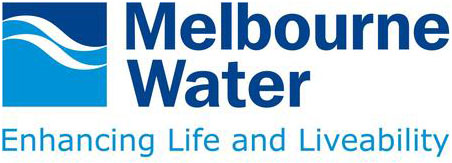resource library
ArrayWater Sensitive Cities Conference 2021 virtual site tours
01 March 2021
The CRC for Water Sensitive Cities created these online tours for the 5th Water Sensitive Cities Conference in March 2021. They have generously provided free access to all these tours to anyone who did not have an opprotunity to attend the conference.
The six tours, all available through YouTube are between 15 - 20 minutes long each. You will be guided through water senstive housing developments, water senstive streets, stormwater harvesting projects, wetland and waterway transformation projects. Click on the highlighted tour title links to access each of the tours
Aquarevo Housing Development, Victoria: This unique residential development comprises homes that include innovative water saving features. On this tour, find out how South East Water’s OneBox®+ controller can manage and monitor sensors, irrigation and misting to cool the landscape and mitigate urban heat. Sensors monitor ambient temperature, ambient light intensity, relative humidity, soil moisture and soil temperature. The project will provide research comparing costs to cool our cities with water, rather than electricity
Wanyarram Dhelk – Bendigo Creek, Victoria: Bendigo Creek is being transformed as a priority project of Water Sensitive Bendigo, the cross-agency partnership responsible for progressing Bendigo’s transition to its water sensitive future. This important project demonstrates how integrating Traditional Owner knowledge with water sensitive design can help restore cultural, social and environmental values to a degraded urban creek. Projects like Wanyarram Dhelk provide an evidence base for practitioners, helping to influence practice and promote adoption.
Yarrabilba Development, Queensland: This significant residential development in Logan will be Australia’s first circular economy community—with water as the enabler. The goal is to create and complete a world’s best practice water sensitive street. The design incorporates stormwater quality and food management measures (constructed wetlands, bioretention basins and sediment ponds) into public open spaces and linear parks, improving water quality and providing a transitional landscape from highly urban to retained vegetation corridors.
Wharf Street Wetlands, Western Australia: This bio basin project demonstrates how converting a stormwater drain into a new multifunctional smart park unlocked a hectare of open space in the heart of Canning. The public park features a community wetland and park, and extensively integrates smart technology for greater resource efficiency and community wellbeing. It is a place to relax, a habitat for wildlife, and an education space where visitors can learn more about water. The high-tech inclusions allow the City of Canning to extract important data for maintaining bins and park lighting, timing irrigation to when the park trees need watering, and managing stormwater and public safety.
East Village at Knutsford in Fremantle Western Australia highlights a new residential development that is setting a new benchmark for sustainable living. The development comprises sustainable homes and green spaces that are both productive and cooling. Architecturally designed townhouses feature a rooftop solar PV array and underground rainwater tanks. Shared and public spaces are irrigated using stormwater and rainfall collected via permeable paving, raingardens and swales. The project is recognised as a global leader in sustainability by the One Planet Living® program
Unity Park biofilters, wetlands and MAR scheme, South Australia_ this tour explores the biofilter, constructed wetlands and managed aquifer recharge system that is managing stormwater and providing an alternative water source. The wetlands and biofilter capture and treat stormwater before it is stored in underground aquifers. Over 150 km of ‘purple pipe’ then distributes the water, which is used to irrigate parks, reserves, and schools. It is also used in industry and for toilet/garden use in some new residential developments.
Royal Park 360 Virtual Tour, Melbourne, Victoria: CRCWSC has partnered with Austrade and with input from the City of Melbourne to create this virtual reality (VR) case study platform. The Royal Park stormwater harvesting project is one of Melbourne’s most successful stormwater harvesting projects. Located near Melbourne’s CBD, Royal Park spans over 170 hectares of green open space and is also home to the Royal Melbourne Zoo. The VR platform for this site offers fantastic 360-degree views plus closeups and overhead shots of the components of the stormwater system. Users can click on any component to get a detailed description of it.
